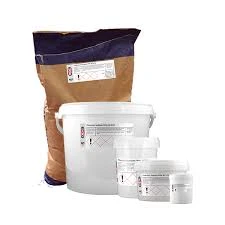
monosodium glutamate use in food
Monosodium Glutamate (MSG) Use in Food An Examination of Its Application and Perception
Monosodium glutamate, commonly known as MSG, is a flavor enhancer that has been the subject of much debate and research since its discovery in the early 20th century. As a sodium salt of glutamic acid, an amino acid naturally found in many foods, MSG has become a ubiquitous ingredient in the culinary world. While some consider it a culinary secret that elevates flavors, others are critical of its safety and potential health effects. This article explores the use of MSG in food, its benefits, and the controversies surrounding it.
First introduced to the American market in the 1940s, MSG was originally extracted from seaweed and later synthesized from starch, sugar beets, or sugar cane. It was quickly embraced by food manufacturers for its ability to enhance the umami flavor, often described as a savory taste reminiscent of broths and cooked meats. Umami is one of the five basic tastes, alongside sweet, sour, bitter, and salty, and it plays a crucial role in flavor complexity. Consequently, MSG became an integral component in various cuisines, particularly in Asian dishes, canned soups, processed meats, and snack foods.
Monosodium Glutamate (MSG) Use in Food An Examination of Its Application and Perception
Beyond flavor enhancement, MSG has been found to stimulate appetite and improve food palatability, making it a valuable tool for the food industry. Restaurants and fast-food chains often use MSG to create signature dishes that leave a lasting impression on consumers. Its widespread use in processed foods is also economically advantageous as it allows manufacturers to provide flavor without the need for expensive ingredients.
monosodium glutamate use in food

However, the use of MSG has not been without its controversies. In the late 1960s, the term “Chinese Restaurant Syndrome” emerged after reports of adverse reactions in individuals after consuming Chinese food containing MSG. Symptoms such as headaches, flushing, and numbness were reported, leading to a widespread fear of the ingredient. Despite numerous scientific studies concluding that MSG is safe for the general population, the stigma surrounding it persists.
Regulatory agencies, including the Food and Drug Administration (FDA) and the World Health Organization (WHO), have recognized MSG as generally safe for consumption. The FDA has classified MSG as “generally recognized as safe” (GRAS), a designation for food ingredients deemed safe based on extensive research. Furthermore, comprehensive reviews of available literature have shown no direct link between MSG consumption and serious health issues in the general population.
In recent years, there has been a resurgence of interest in MSG, largely driven by food enthusiasts and the rise of umami-centric dining experiences. Chefs are increasingly utilizing MSG in innovative ways, incorporating it into gourmet dishes to enhance complexity and depth of flavor. As a result, there is a growing movement to demystify MSG and reintroduce it as a legitimate culinary tool.
In conclusion, monosodium glutamate remains a staple in the food industry for its flavor-enhancing properties and economic benefits. While it has faced significant scrutiny and controversy, scientific evidence largely supports its safety for consumption. As culinary trends evolve and the public becomes more educated about food additives, MSG may once again find its place in kitchens and restaurants around the world, celebrated for the unique umami flavor it brings to the table.
-
Sodium Dichloroisocyanurate Safety Handling ProtocolsNewsJul.29,2025
-
Mining Chemicals for Copper Extraction Processes GuideNewsJul.29,2025
-
Fertilizer for Sale Shipping and Storage TipsNewsJul.29,2025
-
Dimethyl Disulfide as Sulfurizing AgentNewsJul.29,2025
-
Benzotriazole Safety Data Handling and Storage GuidelinesNewsJul.29,2025
-
Ammonium Bicarbonate Safety Handling Storage GuidelinesNewsJul.29,2025
-
The Transformative Role Of Trichloroisocyanuric Acid in Water TreatmentNewsJul.23,2025
Hebei Tenger Chemical Technology Co., Ltd. focuses on the chemical industry and is committed to the export service of chemical raw materials.
-

view more DiethanolisopropanolamineIn the ever-growing field of chemical solutions, diethanolisopropanolamine (DEIPA) stands out as a versatile and important compound. Due to its unique chemical structure and properties, DEIPA is of interest to various industries including construction, personal care, and agriculture. -

view more TriisopropanolamineTriisopropanolamine (TIPA) alkanol amine substance, is a kind of alcohol amine compound with amino and alcohol hydroxyl, and because of its molecules contains both amino and hydroxyl. -

view more Tetramethyl Thiuram DisulfideTetramethyl thiuram disulfide, also known as TMTD, is a white to light-yellow powder with a distinct sulfur-like odor. It is soluble in organic solvents such as benzene, acetone, and ethyl acetate, making it highly versatile for use in different formulations. TMTD is known for its excellent vulcanization acceleration properties, which makes it a key ingredient in the production of rubber products. Additionally, it acts as an effective fungicide and bactericide, making it valuable in agricultural applications. Its high purity and stability ensure consistent performance, making it a preferred choice for manufacturers across various industries.











